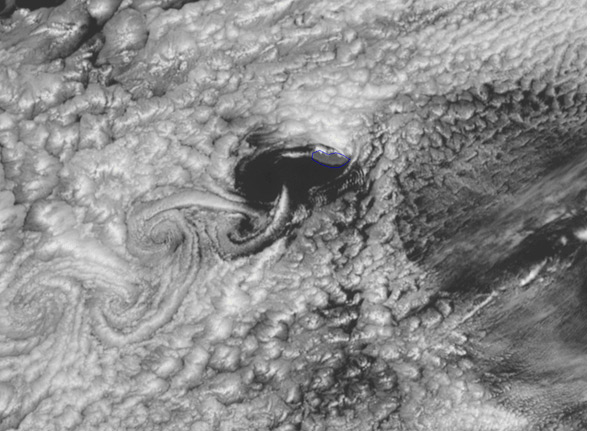A Gorgeous (Non-Polar) Vortex
Satellite imagery of Earth is incredible. It affords us flatlanders a view of phenomena that perhaps we never even knew existed.
For example, are you aware of von Kármán vortices? No? Regular readers might be; I’ve written about them before (see Related Posts, below). I wrote a detailed explanation of them once, but in a nutshell, when wind moves past an obstacle, it flows around the obstacle. Eddies form in the flow, little vortices, and they’re unstable. They push one way on the flow, the flow pushes back, and what you get is a wavy pattern in the flow downstream of the obstacle.
Sounds weird? Well, I think an animated GIF is worth a thousand words. Check this out!
(Click to hydrodynamicate.)
That’s Madeira Island, a few hundred kilometers west of Morocco—for scale, the island is about 57 kilometers (35 miles) long.* This animation is from a series of images taken on May 1, 2014, from the EUMETSAT weather satellite. You’re watching a full day from sunrise to sunset. As winds blow across the island, they flow around it, setting up those beautiful vortices downwind past the island.
As the animation repeats, watch just downwind from the island; you can see the clouds whipping back and forth, toward the top of the frame and then down and then back again, several times. That’s what sets up the vortices, and why they rotate in opposite directions as they split off the island (this is called “vortex shedding”).
On smaller scales, this is what makes street signs vibrate madly in stiff winds, and can cause damage to them if the vibration matches the natural resonance of the signpost; it gets amplified and can put a lot of stress on the post. This can happen with buildings and other vertical structures as well; engineers have to account for it when they design such things.
And here it is, big enough to see even from space. As usual, getting up off our planet gives us a perspective we lack stuck on the ground and shows us more of what our planet is really about. Why, it’s almost as if there’s a lesson there about space exploration, isn’t it?
*Correction, June 10, 2014: This post originally misstated the direction of Madeira Island relative to Morocco.
Related Posts



